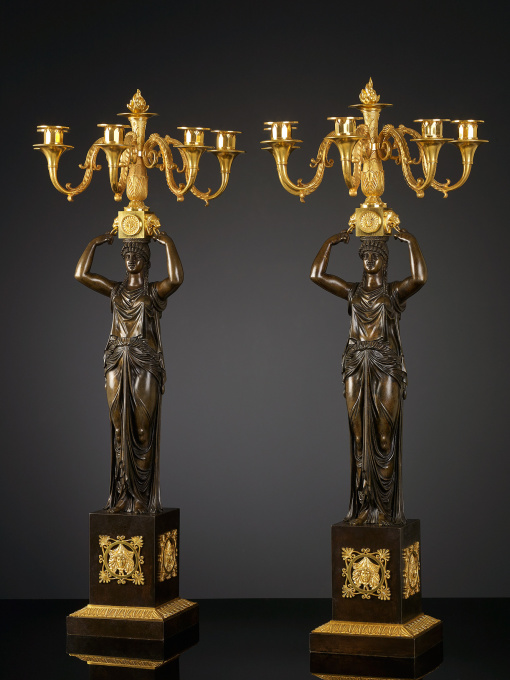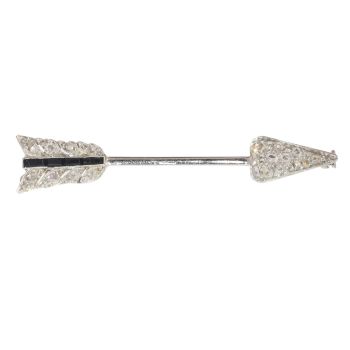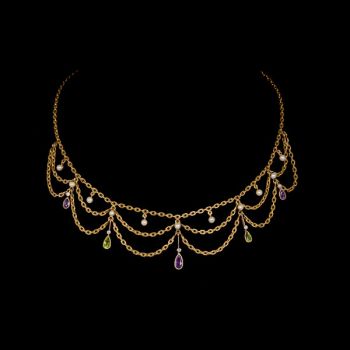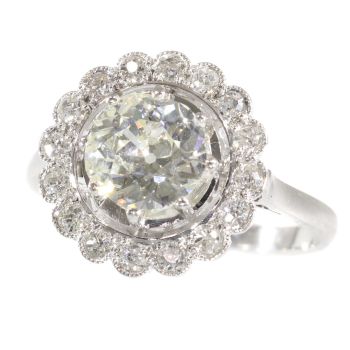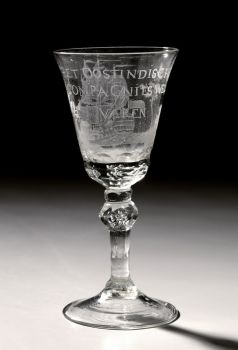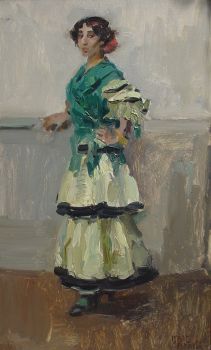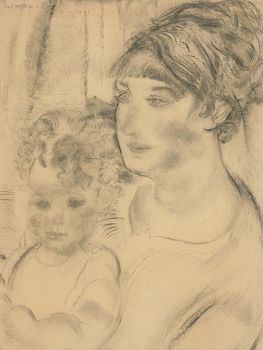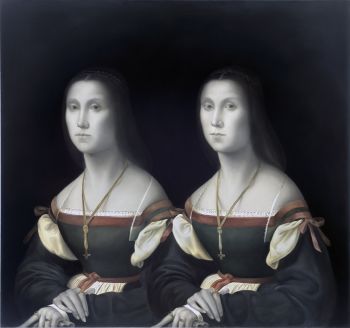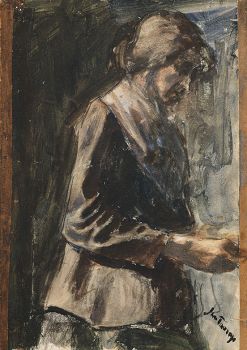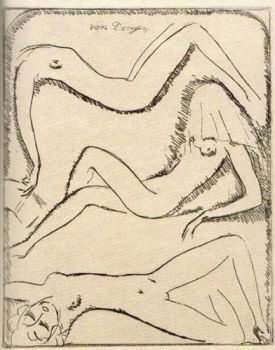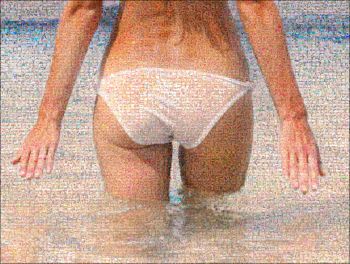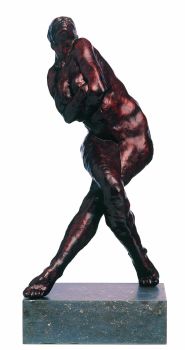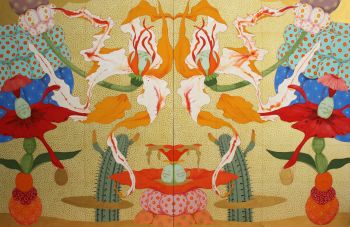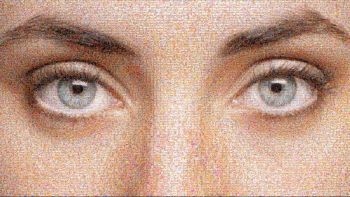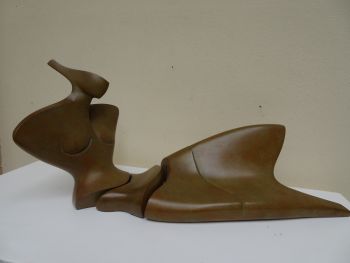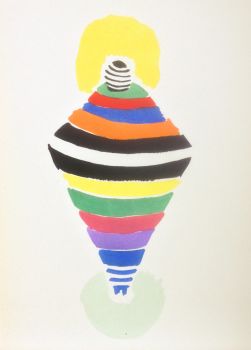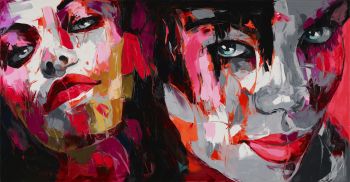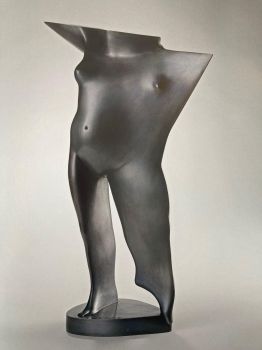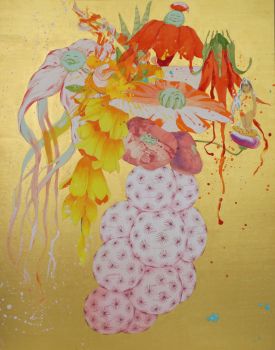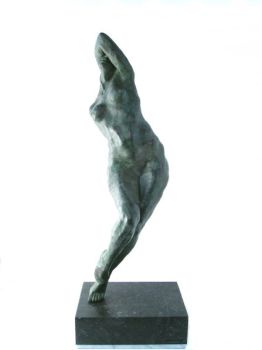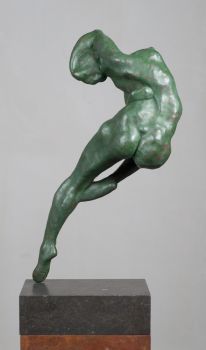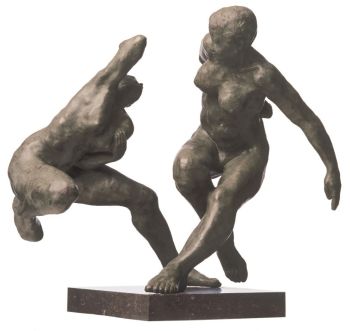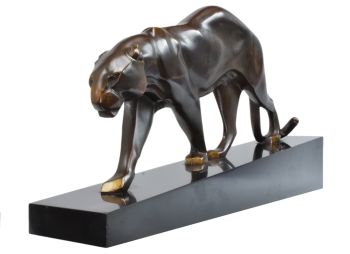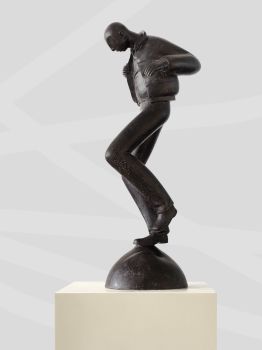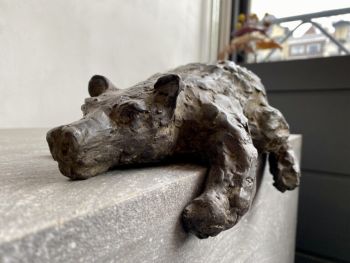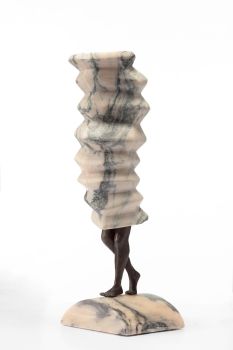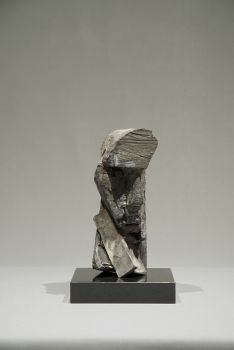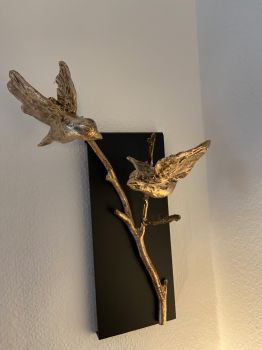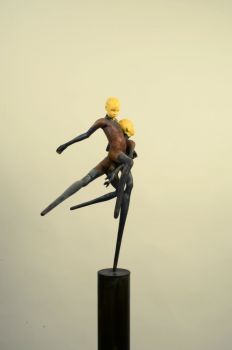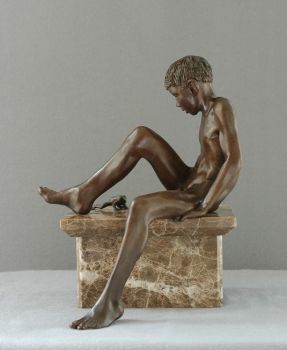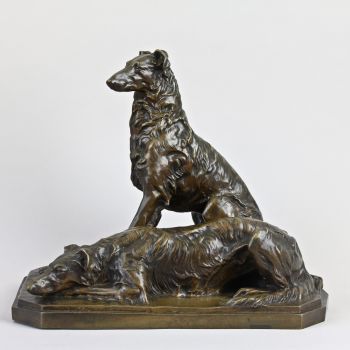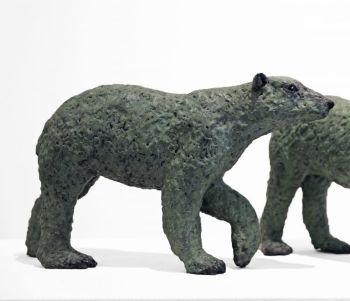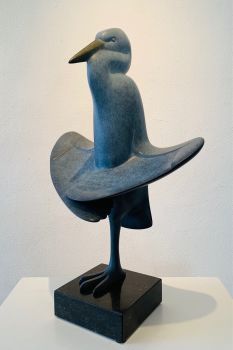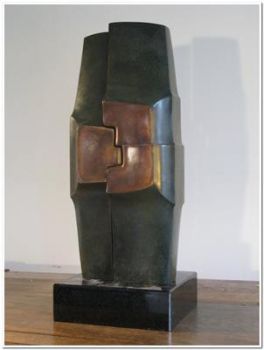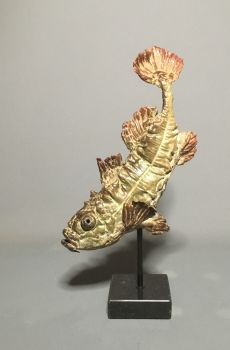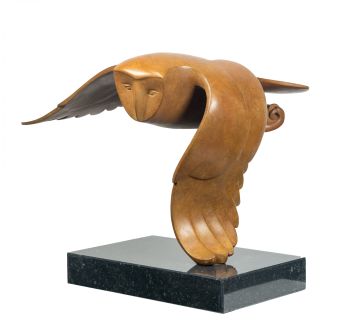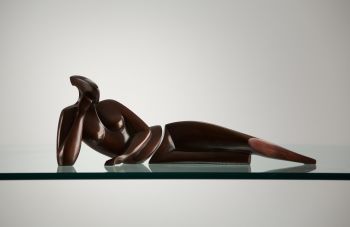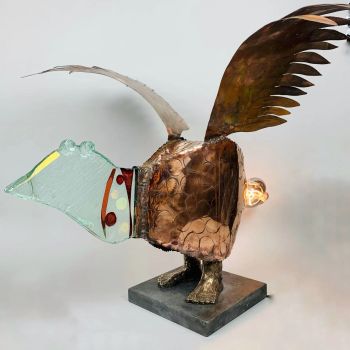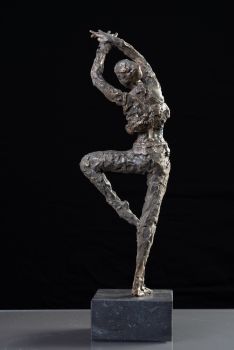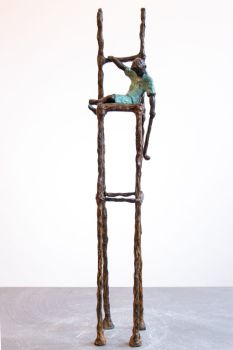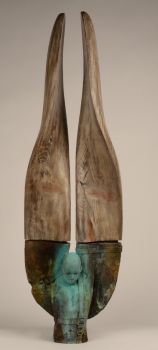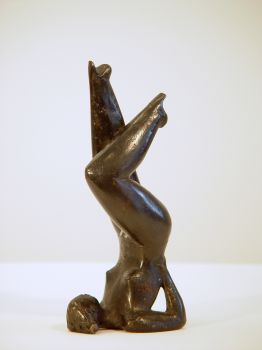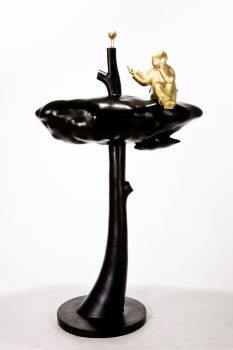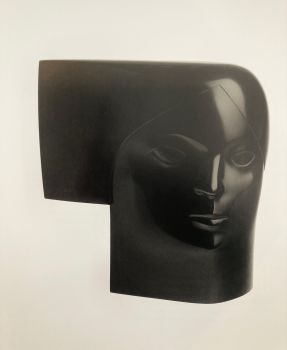Pair of Empire Candelabra 1810
Unknown artist
BronzeMetal
70 ⨯ 30 ⨯ 18 cm
Currently unavailable via Gallerease
- About the artworkA pair of Empire candelabra with five lights. On a pedestal with a broad plinth stands a woman dressed as a classic Greek priestess. On her head she carries a flaming brazier. From the middle of the baluster-shaped brazier five arms with candleholders fan out. The first part of the arms is decorated with acanthus. The upward curving part ends in a trumpet-shaped drip tray with a straight candleholder and a plain bobeche. The cubical base of the brazier is decorated with a rosette at the front and two lion’s heads holding a ring in its beak at the sides. The women hold their index fingers to these rings.
The simple patinated pedestals with a broad plinth are decorated with a sloping edge with leaf motifs. On the sides of the pedestal simple round cartouches with gilt bronze portraits in relief. The cartouches are edged with a decoration of stylized leaf motifs connected with S-volutes.
The pure French Empire style, originates from Paris, following the admiration of Napoléon Bonaparte for the ancient Egyptian culture. Many elements of the Empire style are inspired on ancient Egyptian culture or Roman architecture. The style is kin to the classicist Louis XVI style but is characterized by the abundant use of martial references, sphinxes and palmettes. - About the artist
It might happen that an artist or maker is unknown.
Some works are not to be determined by whom it is made or it is made by (a group of) craftsmen. Examples are statues from the Ancient Time, furniture, mirroirs, or signatures that are not clear or readible but as well some works are not signed at all.
As well you can find the following description:
•“Attributed to ….” In their opinion probably a work by the artist, at least in part
•“Studio of ….” or “Workshop of” In their opinion a work executed in the studio or workshop of the artist, possibly under his supervision
•“Circle of ….” In their opinion a work of the period of the artist showing his influence, closely associated with the artist but not necessarily his pupil
•“Style of ….” or “Follower of ….” In their opinion a work executed in the artist’s style but not necessarily by a pupil; may be contemporary or nearly contemporary
•“Manner of ….” In their opinion a work in the style of the artist but of a later date
•“After ….” In their opinion a copy (of any date) of a work of the artist
•“Signed…”, “Dated….” or “Inscribed” In their opinion the work has been signed/dated/inscribed by the artist. The addition of a question mark indicates an element of doubt
•"With signature ….”, “With date ….”, “With inscription….” or “Bears signature/date/inscription” in their opinion the signature/ date/ inscription has been added by someone other than the artist
Artwork details
Related artworks
- 1 - 4 / 12
Unknown artist
Set Franse Empire Pendules / Empire Lectura penduleearly 19th
Price on requestKuipers Kunst & Antiek
Unknown artist
18th Century Diamond Bracelet with 2000-year-old Intaglios1790
€ 23.000Adin Fine Antique Jewellery
 Curated by
Curated byDanny Bree
1 - 4 / 15Unknown artist
A SMALL IVORY NETSUKE OF A DUTCHMAN WITH A DRUM1750 - 1800
Price on requestZebregs & Röell - Fine Art - Antiques
Unknown artist
A IVORY NETSUKE OF A DUTCHMAN HOLDING A COCKEREL18th century
Price on requestZebregs & Röell - Fine Art - Antiques
1 - 4 / 24Mary Alacoque Waters
'Unknown Twins' after Rafael1999 - 2004
Price on requestGalerie Mia Joosten Amsterdam
1 - 4 / 24- 1 - 4 / 24

